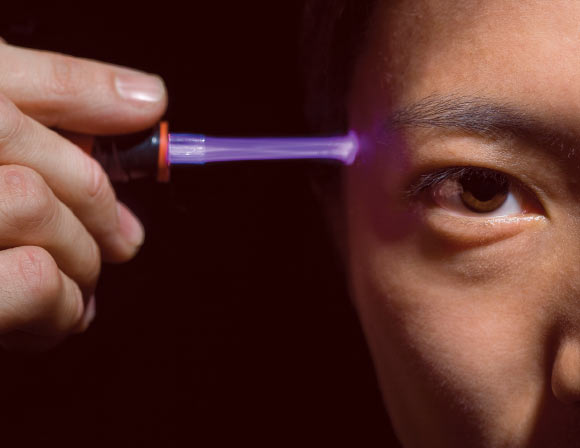Non-equilibrium atmospheric pressure plasma jets are a promising mode of treating a variety of afflictions. However, unpredictable turbulence in the plasma has hindered the consistent application of this therapy in the clinic. In a recent study, scientists have revealed the cause of turbulence in the plasma, paving the way for the consistent application of this approach in the clinic.

Researchers from the University of Michigan have uncovered that the cause of turbulence in non-equilibrium atmospheric pressure plasma is due to heat-induced sound waves from the instrument’s electrodes. Image credit: Texas A&M University.
Plasma is an ionized gas composed of equal amounts of positive ions and free-flowing and one of the four fundamental states of matter.
Interestingly, a special type of plasma called non-equilibrium atmospheric pressure plasma is effective in healing wounds as well as combatting cancer and bacterial cells. This plasma is created via ionization of a noble gas using an electrical field.
Doctors can use a pen-sized instrument that exposes a high-speed jet of this plasma with the surrounding air. This in turn creates a host of free radicals that researchers hypothesize stimulate an immune response to facilitate wound healing, trigger oxidative stress in cancer cells and burst open bacterial cell walls.
Nevertheless, the implementation of this approach into the clinic has been hampered by unpredictable turbulence in the plasma.
Turbulence isn’t necessarily an unwanted phenomenon in this approach, as it creates even more free radicals that may be beneficial in certain clinical scenarios. However, the ambiguity of the underlying cause of turbulence prevents adequate control in the clinic.
“From a clinical standpoint, that’s probably not what you want. To obtain FDA approval of a plasma process, you want to be able to say that every time I treat the patient I’m treating in the same way,” said Mark J. Kushner, a researcher involved in this study.
He and other scientists from the University Michigan used computer simulations to predict the cause of the turbulence that dramatically changes plasma direction and velocity. Their results have been published and featured on the cover of Applied Physics Letters.
They found that the turbulence arises from heat-induced sound waves generated at the electrodes of instrument. These sound waves perturb the boundary between the plasma and air.
These findings will allow clinicians to fine-tune the level of turbulence and thus the amount of radicals directed at patients.
“Now that we understand where the induced turbulence in atmospheric pressure plasma jets is coming from, it may be possible to better control it,” commented Amanda Lietz, the lead author on the study.
This research will be useful in the ongoing clinical trials evaluating the safety and efficacy of non-equilibrium atmospheric pressure plasma pens.
_____
Amanda M. Lietz et al. Plasma-induced flow instabilities in atmospheric pressure plasma jets. Applied Physics Letters 111: 114101; doi: 10.1063/1.4996192







